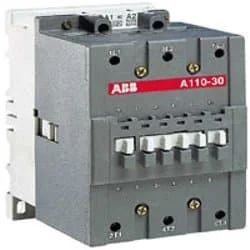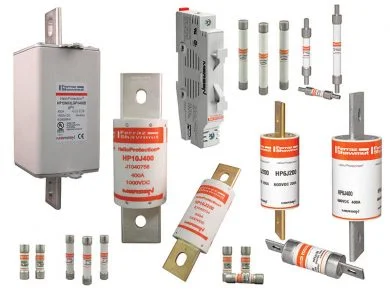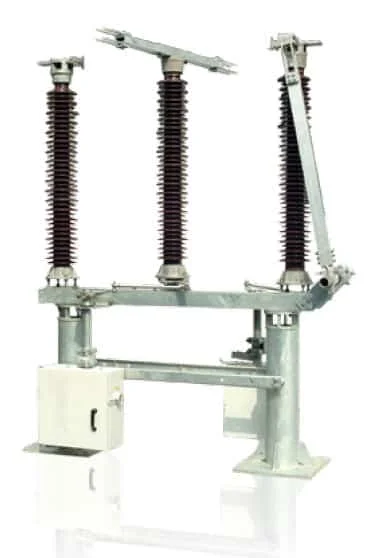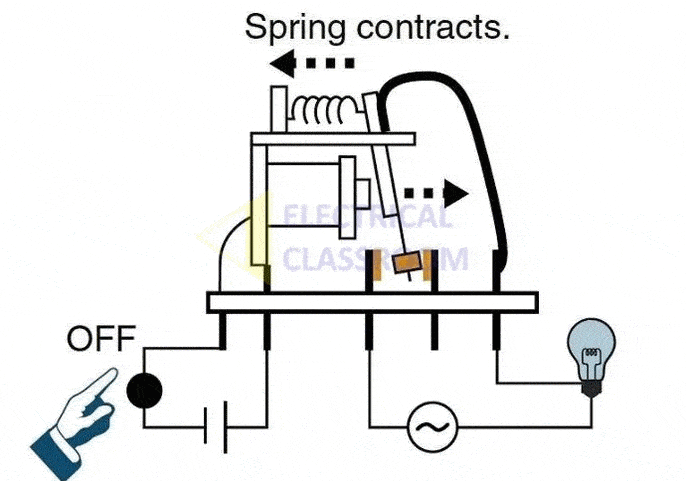What is switchgear?
Any mechanical switching devices used to make or break the current flow and their combination with measuring and control devices are known as switchgear. This includes circuit breakers, contactors, isolators, fuses, relays etc. This articles intents to describe the different switchgear in short and their switching phenomena.
Circuit breaker
A circuit breaker, in general, is a mechanical switching device that interrupts the current flow to the connected load on the occurrence of faults. It is capable of making and breaking contacts during normal operations and safely interrupt the current flow under specified abnormalities. Moulded case circuit breakers (MCCB), Vacuum Circuit Breakers (VCB), SF6 breakers, Residual current breakers, Miniature circuit breakers, Motor Protection circuit breakers are few of them.
| Breaker type | Usage |
|---|---|
| Miniature circuit breakers (MCB) and Moulded Case circuit breakers (MCCB) | Used for LV circuit protection |
| Vacuum circuit breakers | Used for MV circuits protection |
| SF6 breakers | Used for HV circuits protection |
| Residual current breakers | Protects against electric shock |
| Motor Protection circuit breaker (MPCB) | Used for motor protection |
| Earth Leakage circuit breakers (ELCB) | Protect against earth leakages |
Contactors
Contactors are mechanical switching devices that are capable of making, carrying or breaking current flow under normal conditions. They are basically electrically controlled switches, that can be used to start/stop electric motors, switch capacitors and power ON/OFF lights. They are not designed for short circuit current interruption. Low voltage contactors are mostly air break type and medium voltage contactors can be air, oil or SF6 types.

Read More: Contactor – Construction, Operation, Application and Selection
Read More: Utilization categories for low voltage switchgear
Fuse Links
Fuse links are self-destructive circuit protection devices used to interrupt current flow during short circuits. Fuses acts so quickly that it interrupts the short circuit current before it reaches its peak value. Fuses are available in various sizes and forms.

Disconnectors or isolators
Disconnectors or isolators are designed to mechanically open or close a circuit. It does not have any protective functions. It is capable of carrying its rated current during normal working conditions. They are used to switch on and off loads during normal operating conditions. They are also used to isolate a section of electrical installation. However, disconnectors are not suitable for the switching of electric motors. The starting current requirements of motors could damage the isolators.

Switches
An electric switch is a basic switchgear, that we operate always. It is used to make, supply and break electricity to domestic loads. They are available in different forms. Apart from those used for domestic and commercial applications, there are many other types of switches that are used in industries and appliances. Limit switches, proximity switches etc. are few examples for industrial switches.
Relays
Relays are classified into control relays and protection relays. Control relays are used in open on close a circuit on receiving electrical signals where as protection relays are used for trip circuit breakers when a fault is detected.

Know more: Operation, types and applications
“Miniature circuit breakers (MCB) and Moulded Case circuit breakers (MPCB)”
Should read–
Miniature circuit breakers (MCB) and Moulded Case circuit breakers (MCCB)
Useful information with simple language
Switchgear is very wide category to explain but this article is very good to understand